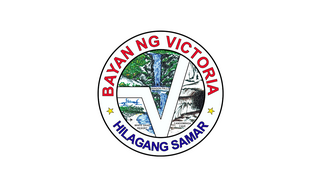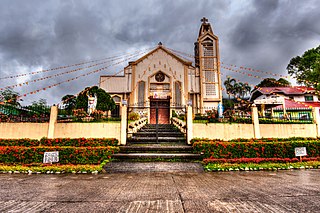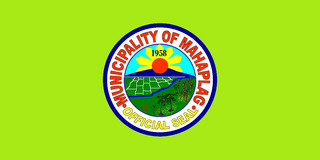
Abuyog, officially the Municipality of Abuyog, is a municipality in the province of Leyte, Philippines. According to the 2020 census, it has a population of 61,216 people.

Alangalang, officially the Municipality of Alangalang, is a 2nd class municipality in the province of Leyte, Philippines. According to the 2020 census, it has a population of 57,185 people.

Villaba, officially the Municipality of Villaba, is a 3rd class municipality in the province of Leyte, Philippines. According to the 2020 census, it has a population of 42,859 people.

San Julian, officially the Municipality of San Julian, is a 5th class municipality in the province of Eastern Samar, Philippines. According to the 2020 census, it has a population of 14,800 people.

Mondragon, officially the Municipality of Mondragon, is a 3rd class municipality in the province of Northern Samar, Philippines. According to the 2020 census, it has a population of 41,415 people.

Victoria, officially the Municipality of Victoria, is a 5th class municipality in the province of Northern Samar, Philippines. According to the 2020 census, it has a population of 15,361 people.

General MacArthur, officially the Municipality of General MacArthur, is a 5th class municipality in the province of Eastern Samar, Philippines. According to the 2020 census, it has a population of 14,411 people.

Sulat, officially the Municipality of Sulat, is a 4th class municipality in the province of Eastern Samar, Philippines. According to the 2020 census, it has a population of 15,758 people.

Taft, officially the Municipality of Taft, is a 4th class municipality in the province of Eastern Samar, Philippines. According to the 2020 census, it has a population of 18,786 people.

Liloan, officially the Municipality of Liloan, is a 4th class municipality in the province of Southern Leyte, Philippines. According to the 2020 census, it has a population of 24,800 people.

Limasawa, officially the Municipality of Limasawa, is an island municipality in the province of Southern Leyte, Philippines. According to the 2020 census, it has a population of 6,191 people, making it the least populated town in the province.

Malitbog, officially the Municipality of Malitbog, is a 4th class municipality in the province of Southern Leyte, Philippines. According to the 2020 census, it has a population of 23,256 people.

Pintuyan, officially the Municipality of Pintuyan, is a 5th class municipality in the province of Southern Leyte, Philippines and was established in 1865. During the American regime, the seat of Pintuyan was moved to Pintuyan from San Ricardo upon the election of Perfecto Vazquez as Municipal President. From then on the residents of barrio San Ricardo petitioned for a separate municipality. According to the 2020 census, it has a population of 10,202 people.

Tomas Oppus, officially the Municipality of Tomas Oppus, is a 5th class municipality in the province of Southern Leyte, Philippines. According to the 2020 census, it has a population of 16,990 people.

Bato, officially the Municipality of Bato, is a 4th class municipality in the province of Leyte, Philippines. According to the 2020 census, it has a population of 38,505 people.

Kananga, officially the Municipality of Kananga, is a 1st class municipality in the province of Leyte, Philippines. According to the 2020 census, it has a population of 59,696 people.

Mahaplag, officially the Municipality of Mahaplag;, is a 4th class municipality in the province of Leyte, Philippines. According to the 2020 census, it has a population of 27,865 people.

MacArthur, officially the Municipality of MacArthur, is a 5th class municipality in the province of Leyte, Philippines. According to the 2020 census, it has a population of 21,578 people.

Mayorga, officially the Municipality of Mayorga, is a 5th class municipality in the province of Leyte, Philippines. According to the 2020 census, it has a population of 18,071 people.

Palompon, officially the Municipality of Palompon, is a 2nd class municipality in the province of Leyte, Philippines. According to the 2020 census, it has a population of 58,313 people.























